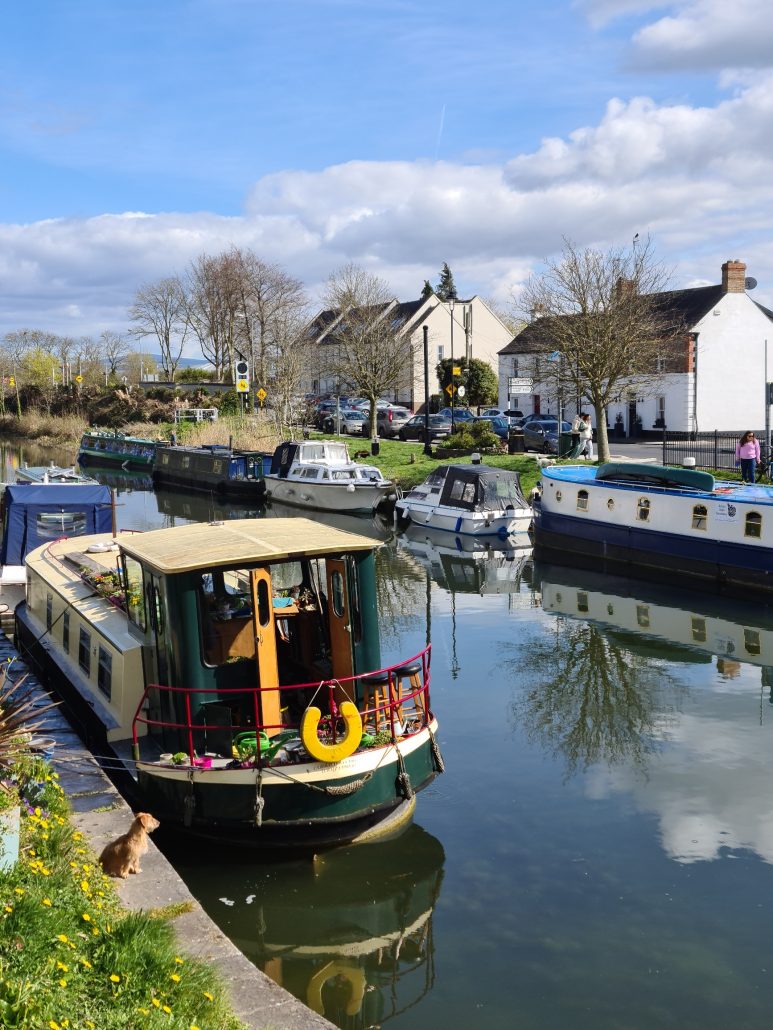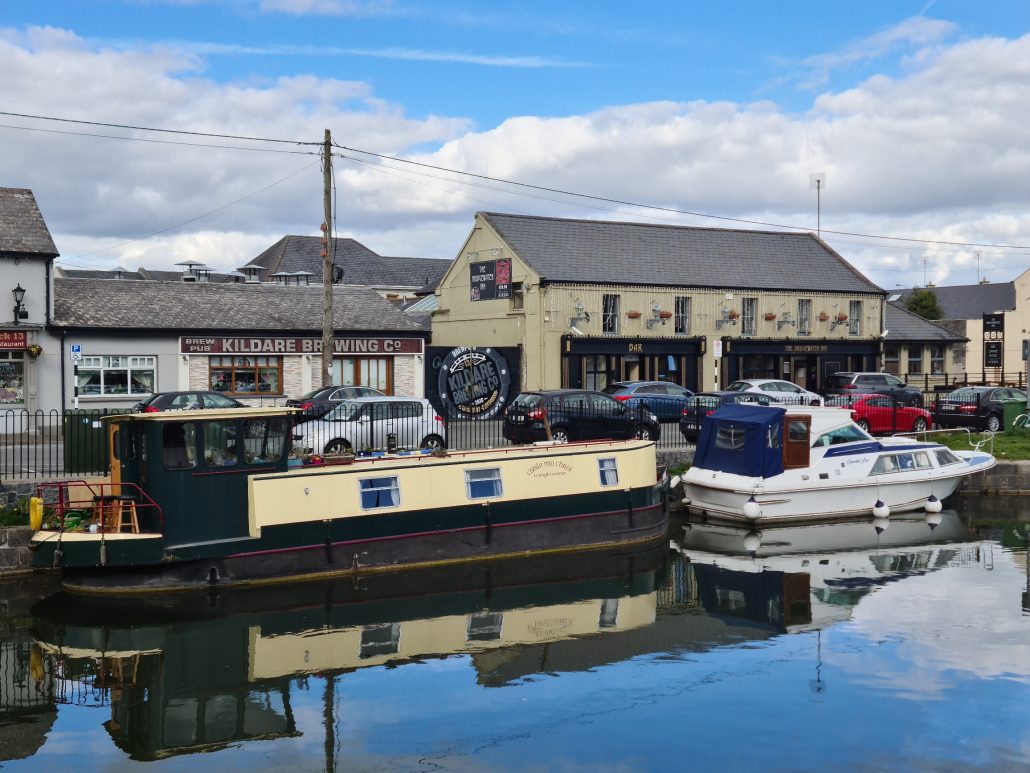There’s a romanticism about living on a houseboat, especially on blue sky days. Coffee on the deck (am I getting the lingo right? ). Sunnies on. People watching. The Grand Canal in Sallins, Co. Kildare, is one of Ireland’s picturesque houseboat spots.
Erin Fornhoff writes about her narrowboat home for the Rogue Collective:
Our home floats. It is fifty-five feet long from stern to bow, narrow enough that I can stand in the centre and touch both side walls with the tips of my fingers. When I wash the dishes, sometimes a pair of swans comes to peck on my window. It is the first home and the most expensive thing I have ever bought.
Curious to know how expensive, expensive is, I checked Apolloduck. ie and see some serious bargains, when you pit the cost against bricks and mortar. I’ve barged both the Grand Canal and the Royal Canal with a group of friends. Five of us. I found a new talent. I can turn a barge cleanly in three turns. I impressed myself. I really did, given that I can’t do it with a car. Maybe bigger is better.

That said, residential permits are granted for the same spot for one year, which seems to suggest that you’d have to move every 12 months. It’s one way to see the country, I suppose, especially if you’ve no kids and get to work from home.
Ireland boasts two canals.
The Grand Canal
Commissioned around 1755 and opened for business in 1804, the Grand Canal connects Ringsend, Dublin with the River Shannon at Shannon Harbour in Co. Westmeath. It runs for 132 km (82 miles) and has 43 locks. It has it all – inner-city Dublin, suburbia, farmland, and smaller towns and villages. As transport modernised, trading via the Canal dwindled to a stop in 1960 when the last commercial cargo passed through its waters. Today, its barges carry people instead of packages. The towpath runs for 117km and is constantly under development.
The Barrow Line
Running for 65 km (40 miles) between Athy, Co. Kildare and St Mullins, Co. Carlow, the Barrow Line cuts through bogs and farmland, ancient monuments, and stunning scenery. If it’s festivals you’re after, this is one to consider for the
Carlow Regatta in June, the Athy Bluegrass Music Festival in July and the Bagenalstown and Graiguenamangh River Festivals in August.
The Royal Canal
Built as competition for its sister canal, the Royal Canal was commissioned in 1790 and opened for business in 1817. It’s 146 km (90 miles) with 46 locks and runs from Spencer Dock in Dublin to Clondra in Co. Longford. In 2010, the final length was reopened so the Canal is now completely navigable. It only took 36 years and cost €36 million.
While both canals pass through Co. Westmeath, they don’t cross.
Visitors can travel down the Royal Canal to the Shannon, and then from Shannon Bridge, join the Grand Canal back to Dublin.
The trip is about 350 km (217 miles), takes about 2 weeks, and passes through counties Dublin, Kildare, Meath, Westmeath, and Longford.
__________
Friends from Ireland visited Budapest a few years back. He’d built his own barge and boated across to mainland Europe. He came up the Danube into Budapest and stayed a few days. He talked about how friendly everyone is in the narrowboat community. Everywhere they went, they were welcomed. Boats, perhaps, are great levellers.
But back to Sallins, the Kildare village they’re calling Dublin 28!

It’s a great base if you’re into the horses: Punchestown, Naas, and the Curragh race tracks are all close by. It’s not far from the K Club, Palmerstown House, the Curragh, Carton House, and other impressive golf courses. And it’s a 40-minute train ride into Dublin City.
One of the boats, Roisin Dubh, is rentable. Two nights at the first weekend in May will set you back about €400 on Airbnb. It sleeps four. So €50 each a night? That’s competitive, no?
If you’re more adventurous, you can rent a barge and take off on your own. What’s not to like?
It’s a fabulous way to spend a few days. You can’t go any faster than 5km/hour so time takes on new meaning. There’s a regalness to it, too. Everyone walking the towpath waves. You can pull in where suits. Back in the day, the locks were manual – a lot of pushing was involved. Many today are automated, which takes the fun out of it. Still, it’s an idyllic way to pass the time and an interesting way to see the country.

Share this:
- Click to share on X (Opens in new window) X
- Click to share on Facebook (Opens in new window) Facebook
- Click to share on Pinterest (Opens in new window) Pinterest
- Click to share on LinkedIn (Opens in new window) LinkedIn
- Click to share on Reddit (Opens in new window) Reddit
- Click to share on WhatsApp (Opens in new window) WhatsApp
- Click to share on Pocket (Opens in new window) Pocket
- Click to share on Telegram (Opens in new window) Telegram
- Click to email a link to a friend (Opens in new window) Email







One Response